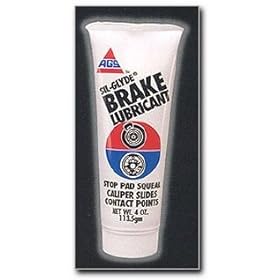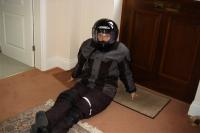So I got the FJR all set for my first ride to work this spring (our dirt road was impassable to anything but a 4x4 up until this week :blink: ), but when I went to leave yesterday I discovered I had a flat battery. That's an easy fix (although expensive - they aren't giving batteries away these days). Yes, I had kept it on a Battery Tender every winter, but its 5+ years old now and its just done.
That's not the point of my question, though. In going over the bike I realized that my rear brake is sticking again. I had this problem last fall. I removed the caliper, made sure the pads could move freely and flushed the brake fluid. I think it helped, but it clearly didn't solve the problem. Has anyone else had a similar issue? Any thoughts on a fix? I have been trolling this and other message boards and about the only thing I could find that I haven't done was to disassemble the brake caliper and check for corrosion in the piston cylinder. I am also wondering if it is the master cylinder. I have seen something similar to this with old cars where the flexible section of brake line just before the caliper degrades over time and the I.D. becomes so small that it acts like a check valve not allowing the brake fluid to leave the caliper. However, this was always on older (10 years +), and I find it difficult to believe the same thing is going on with my '04 FJR. Your thoughts are appreciated.
The upside to this story is that while I am waiting for my lovely wife to stop by the motorcycle shop to pick up the new battery, I dusted off the old '86 FJ1200 and took that to work today. It is still a great ride!
That's not the point of my question, though. In going over the bike I realized that my rear brake is sticking again. I had this problem last fall. I removed the caliper, made sure the pads could move freely and flushed the brake fluid. I think it helped, but it clearly didn't solve the problem. Has anyone else had a similar issue? Any thoughts on a fix? I have been trolling this and other message boards and about the only thing I could find that I haven't done was to disassemble the brake caliper and check for corrosion in the piston cylinder. I am also wondering if it is the master cylinder. I have seen something similar to this with old cars where the flexible section of brake line just before the caliper degrades over time and the I.D. becomes so small that it acts like a check valve not allowing the brake fluid to leave the caliper. However, this was always on older (10 years +), and I find it difficult to believe the same thing is going on with my '04 FJR. Your thoughts are appreciated.
The upside to this story is that while I am waiting for my lovely wife to stop by the motorcycle shop to pick up the new battery, I dusted off the old '86 FJ1200 and took that to work today. It is still a great ride!

























